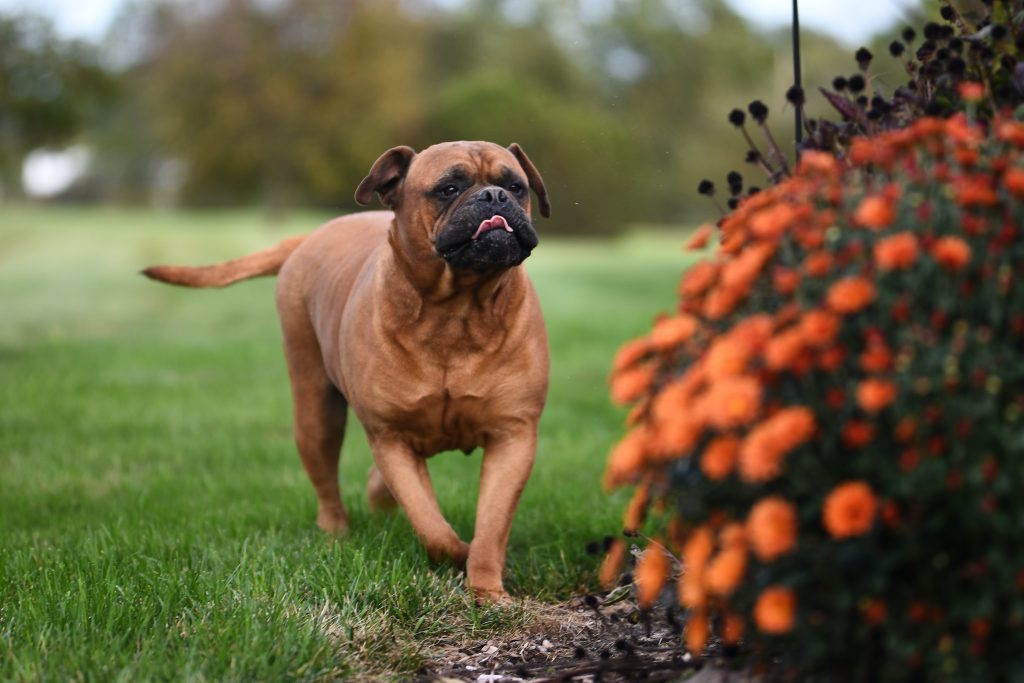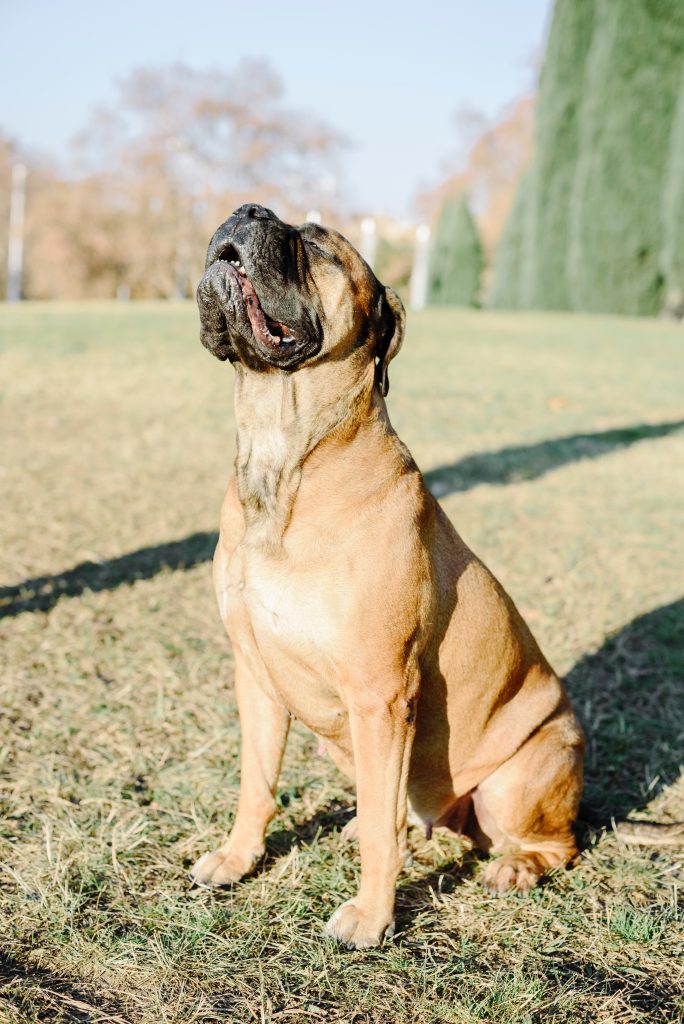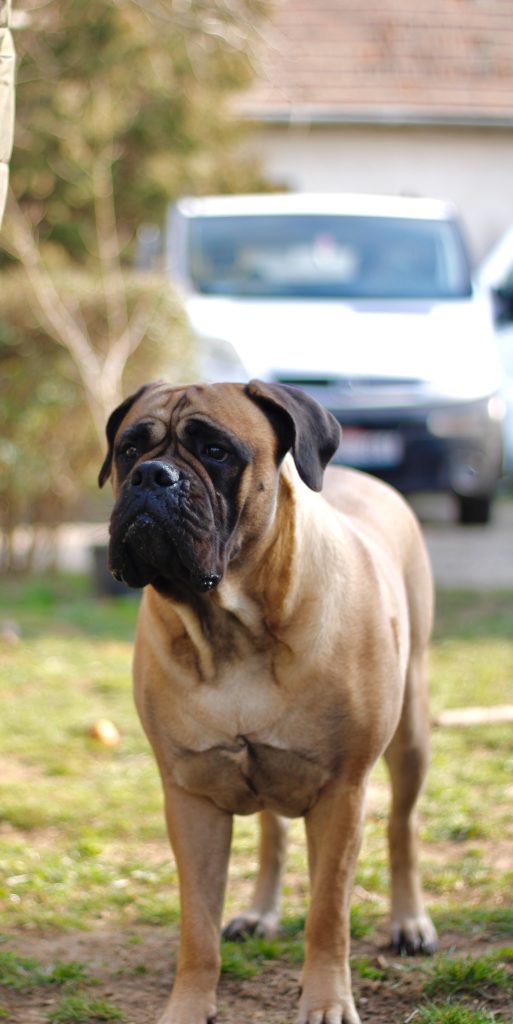Understanding the Temperament and Behavior of Bull Mastiffs: Exploring the gentle and loyal nature of Bull Mastiffs, their training needs, health considerations, and care requirements.

Bull Mastiffs: A Breed with a Storied History and Origin
The Bull Mastiff’s history is a rich tapestry that starts in England in the late 1800s. Bred from Bulldog and Mastiff crosses, this formidable guardian was initially developed to protect large country estates from poachers. The breed’s imposing stature, with a large head, strong legs, and a square, muscled body, made it an ideal choice for this important task. Over time, its gentle and loyal nature also became apparent, endearing it to families and solidifying its position as a beloved companion.
The recognition of Bull Mastiffs by the American Kennel Club in 1933 was a significant milestone in the breed’s journey. This acknowledgment not only underscored the breed’s historical significance but also highlighted its unique characteristics. The AKC’s recognition served as a testament to the breed’s remarkable traits, including its loyalty, intelligence, and protective instincts, which have made it a cherished member of countless households.
Understanding the Gentle and Loyal Nature of Bull Mastiffs
When it comes to the temperament of Bull Mastiffs, their gentle and loyal nature shines through, making them an exceptional breed for families. Their innate sense of responsibility towards their family and property is a testament to their protective instincts, which have been valued for generations. For example, Bull Mastiffs are known to be patient and peaceful, making them excellent companions for families with children. Their calm and composed demeanor allows them to form strong bonds with their human family members, often displaying a remarkable level of loyalty and affection. This gentle and nurturing nature, coupled with their protective instincts, makes them not only great companions but also excellent watchdogs, adding an extra layer of security to the household.
Early socialization and consistent training are crucial to ensure that Bull Mastiffs exhibit well-behaved behavior. For instance, positive interactions with other dogs, pets, and humans from an early age can help to foster a well-adjusted and sociable Bull Mastiff. Moreover, their loyalty and affectionate nature make them highly responsive to training, particularly when positive reinforcement methods are used. This means that with the right training and socialization, Bull Mastiffs can thrive in a home environment, forming strong, positive relationships with their human companions and other pets, showcasing their gentle and loyal nature to the fullest.

Training Bull Mastiffs: A Key to Their Well-Behaved Behavior
When it comes to training Bull Mastiffs, it is essential to understand the breed’s unique temperament and behavioral traits. These dogs are known for their sensitivity and loyalty, which makes positive reinforcement methods particularly effective in their training. For instance, using rewards and praise to encourage desired behaviors can help Bull Mastiffs develop into well-mannered and obedient pets. Additionally, early and consistent obedience training is crucial in managing potential animal aggression and ensuring that these dogs are well-behaved companions.
Moreover, due to their natural protective instincts, early training is vital in helping Bull Mastiffs learn to channel their guarding tendencies appropriately. For example, by introducing them to various social situations and other animals during their formative months, owners can help them distinguish between genuine threats and normal interactions. This approach not only fosters good behavior but also enhances their ability to discern when protective actions are truly necessary, making them reliable and composed in various situations. Therefore, by understanding the breed’s unique traits and providing appropriate training, Bull Mastiff owners can cultivate well-behaved, loyal, and delightful companions.
Health Considerations for Bull Mastiffs
In addition to hip dysplasia and bloat, Bull Mastiffs are also prone to eye issues, which can potentially affect their vision and overall quality of life. Regular eye check-ups and early intervention can help mitigate these concerns and preserve the breed’s visual health. Moreover, potential owners should be aware of the breed’s average lifespan of 7-9 years, which is relatively shorter compared to some other dog breeds. This knowledge can help individuals make an informed decision about whether a Bull Mastiff is the right fit for their lifestyle and expectations, considering the emotional attachment that develops between owners and their pets.
Furthermore, it’s crucial to understand the impact of genetics on the health of Bull Mastiffs. Responsible breeding practices and health screenings for breeding pairs can contribute to minimizing the prevalence of hereditary health conditions within the breed. By seeking reputable breeders who prioritize the overall well-being of the dogs, potential owners can take proactive steps to reduce the risk of inheriting certain health issues. This aligns with the American Kennel Club’s advocacy for responsible dog ownership and support for health initiatives in purebred dogs. Therefore, by being well-informed about the health considerations specific to Bull Mastiffs, prospective owners can create a conducive environment for their pet’s health and happiness, thus fostering a fulfilling companionship for both the dog and the family.

Care and Maintenance of Bull Mastiffs
Bull Mastiffs are known for their relatively low exercise needs, making them suitable for families with busy schedules. However, it’s important to note that they still require regular exercise to maintain their physical and mental well-being. A secure, fenced area for exercise and daily walks are essential to ensure that Bull Mastiffs remain healthy and happy. For example, taking them for walks in a park or allowing them to run around in a safely enclosed area will help them expel excess energy and stay in good shape.
In addition to exercise, Bull Mastiffs have specific care needs related to their drooling, flatulence, and gassiness. While these traits are natural for the breed, owners should be prepared to manage them effectively. For instance, using specialized dog wipes and regularly cleaning their jowls can help with the drooling, while feeding them a balanced diet can assist in minimizing flatulence. Understanding and addressing these unique characteristics is crucial for creating a harmonious and hygienic living environment for the entire family [3].
Furthermore, maintaining a regular grooming routine is important for Bull Mastiffs. Despite their short and dense coat, they still benefit from regular brushing to minimize shedding and keep their skin and coat healthy. Using a soft bristle brush a few times a week can help remove loose hair and distribute their skin’s natural oils. This grooming routine not only contributes to their overall well-being but also provides an opportunity for bonding between the dog and its owner. Additionally, regular nail trimming, ear cleaning, and dental care are essential aspects of grooming that contribute to the breed’s overall health and comfort [4].
Concluding Remarks on Bull Mastiffs
Bull Mastiffs have a rich history that dates back to the late 1800s when they were bred as guard dogs from Bulldog and Mastiff crosses, which solidified their place in the history of dog breeds when recognized by the American Kennel Club in 1933. Their gentle temperament, loyalty, and protective nature make them exceptional companions for families. For example, they are known for their innate sense of responsibility towards their family and property, making them outstanding guardians. Additionally, their peaceful and patient demeanor allows them to form strong bonds with children, highlighting their suitability for family life.
It is important to emphasize that responsible training and socialization play a crucial role in nurturing the affectionate and well-behaved behavior of Bull Mastiffs. Early and consistent obedience training is essential to manage potential animal aggression and ensure a well-mannered pet. Positive reinforcement methods are particularly effective due to the breed’s sensitivity and loyalty. For instance, early socialization and consistent training help them become well-adjusted and sociable pets, making them a joy to be around for their families and communities [2].
Understanding the specific health needs of Bull Mastiffs is paramount for potential owners. They are susceptible to certain health problems, such as hip dysplasia and eye issues, which require vigilant health care and regular check-ups. Additionally, providing regular exercise, ensuring proper grooming, and managing their drooling, flatulence, and gassiness are essential aspects of caring for Bull Mastiffs. By understanding and addressing these needs, owners can ensure the well-being and happiness of these gentle giants in their homes [2][3].
